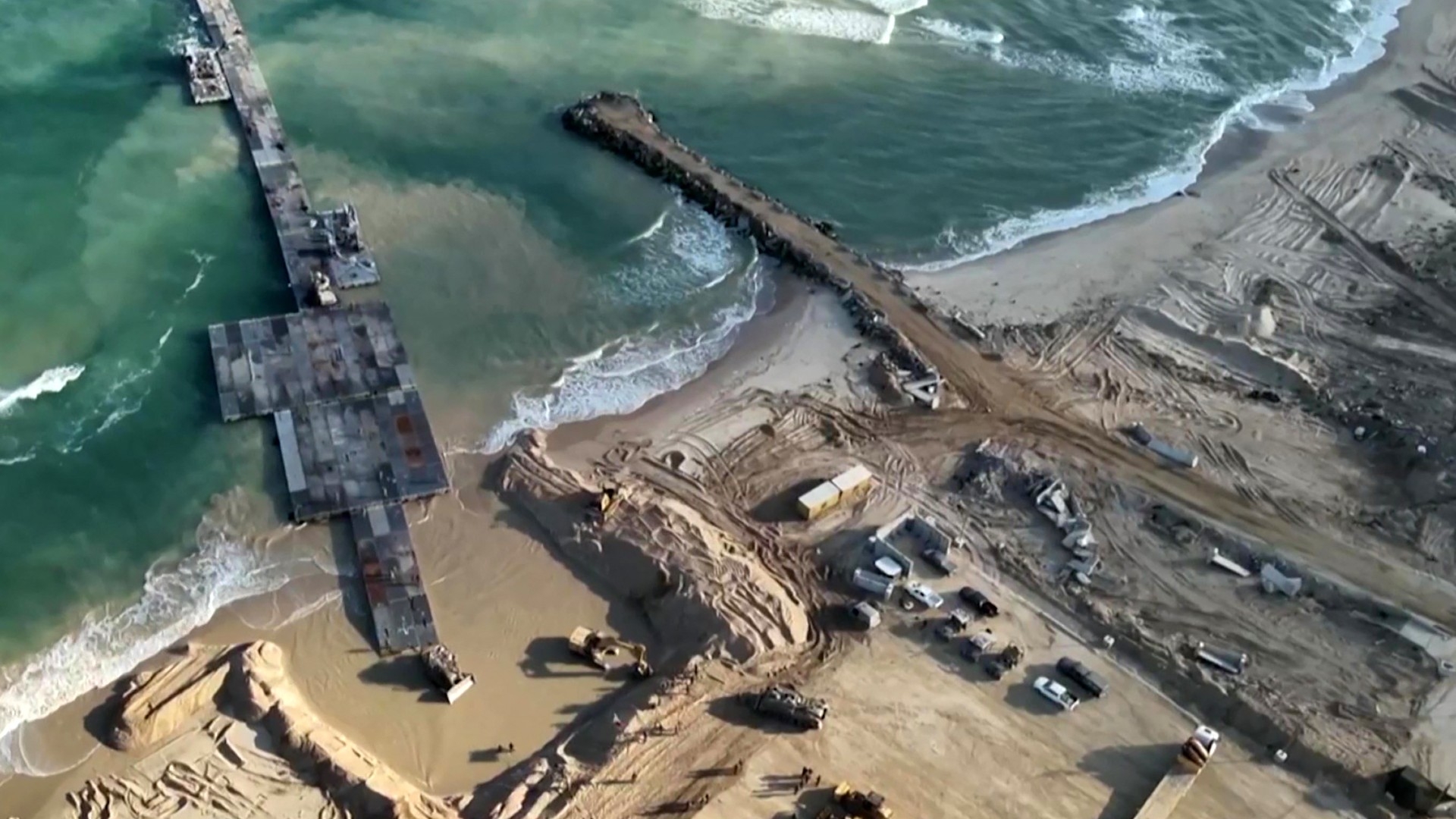US will shut down 'aid pier' in Gaza this month, report reveals

A US-built temporary aid pier in Gaza is expected to be permanently removed and shut down in the coming days, according to an ABC News report.
The $230m structure, first anchored on 17 May, was initially scheduled to remain operational in Gaza until at least 31 July.
Although US officials had considered extending its operation, it is now likely to cease operations before the end of the month.
The pier was recently moved to Ashdod port in Israel due to poor weather. It is scheduled to be reattached to Gaza on Wednesday and shut down a few days later, three US officials told ABC News.
The pier's effectiveness has been marred by bad weather conditions and concerns over the safety of aid workers distributing humanitarian relief.
New MEE newsletter: Jerusalem Dispatch
Sign up to get the latest insights and analysis on Israel-Palestine, alongside Turkey Unpacked and other MEE newsletters
The structure, which rises and falls with the waves, has been relocated to Ashdod three times due to rough seas, most recently on 28 June. It has been operational for only 23 of the 53 days since it was first anchored.
According to US Central Command, the system had delivered over $20 million of aid to Gaza.
Last month, the World Food Programme (WFP) suspended its delivery of aid via the maritime corridor after an Israeli operation in the Nuseirat refugee camp, aimed at freeing four Israeli captives, killed 270 Palestinians.
Videos of a helicopter leaving the US-built pier raised concerns over its potential use in the attack, an allegation that Washington has denied.
The suspension of the port on 28 June due to bad weather has resulted in large amounts of aid piling up on Gaza's beaches, with no one able to distribute it.
A US Agency for International Development (USAID) spokesperson said: “What we continue to focus on is getting urgently needed aid to people in need across Gaza through all available mechanisms.”
“Ashdod port is open for humanitarian deliveries and we expect humanitarians will increasingly use this route.”
Middle East Eye delivers independent and unrivalled coverage and analysis of the Middle East, North Africa and beyond. To learn more about republishing this content and the associated fees, please fill out this form. More about MEE can be found here.




